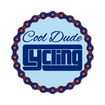Improving max power is critical for cyclists aiming to enhance their sprinting, climbing, and overall performance on the bike. Whether you're tackling steep climbs, launching into sprints, or simply striving for greater efficiency, focusing on max power will benefit all aspects of your cycling. Here’s a comprehensive guide on how to increase your max power, including key training methods, equipment, and recovery strategies.
High-Intensity Interval Training (HIIT)
One of the most effective ways to improve max power is through high-intensity interval training (HIIT). This involves alternating between short bursts of maximum effort followed by periods of rest or light pedaling.
There are two primary types of HIIT: sprint intervals and on-off intervals. Sprint intervals involve going all-out for 10 to 30 seconds, followed by longer recovery periods. This type of training can be easily incorporated into any ride and is beneficial for improving both short-term power output and overall endurance.
On-off intervals, such as Tabata-style intervals, require shorter recovery periods, typically lasting 30 seconds. These sessions are usually done in blocks and build up as your fitness improves. Incorporating HIIT into your regular rides is a proven way to boost your max power quickly.
Optimize Your Bike Fit
Your bike fit plays a crucial role in maximizing power output. If your bike isn’t set up correctly, you may struggle to transfer power efficiently through the pedals, especially during max efforts. Fine-tuning your position on the bike, including saddle height, reach, and cleat placement, can greatly enhance comfort and power transfer. A well-adjusted bike fit ensures that every watt of energy is used effectively, making it easier to hit those high-power numbers during sprints and climbs.
Use a Power Meter for Tracking and Progress
A power meter is an invaluable tool when working on max power. It helps you track your power output during efforts, ensuring you're hitting your targets and improving over time. Using a power meter allows you to stay accountable by reviewing post-ride data and adjusting your training accordingly. With clear feedback, you can focus on achieving specific wattage goals during your longer sprints and seated efforts, optimizing each session for maximum gains.
Importance of Nutrition
To sustain high-power outputs, proper nutrition is essential. Before high-intensity sessions, load up on carbohydrates to ensure your energy reserves are full. During your rides, continue to refuel with easily digestible carbs and hydration to maintain performance. You can also consider supplements like creatine, which is beneficial for short bursts of power, helping you maintain output during max efforts.
Strength Training for Enhanced Power
Strength training off the bike can also help improve max power. Building leg strength, as well as core stability, will enable you to transfer more force through the pedals. Core strength, in particular, ensures stability during intense efforts, helping you maintain position and channel more energy into your cycling. Incorporating weight training exercises such as squats, deadlifts, and core exercises will provide a solid foundation for improved power output.
High-Cadence Drills
Increasing your leg speed through high-cadence drills is another method to improve max power. Aim to spin your pedals at 100 to 120 revolutions per minute (rpm) during short bursts. This type of training focuses on neuromuscular coordination, helping your body become more efficient at generating power quickly. By pushing yourself to spin faster than usual, you’ll be better prepared for those intense sprints and high-power efforts when they come.
Rest and Recovery
Recovery is a vital part of improving max power. Your muscles need time to repair and strengthen after high-intensity sessions. Aim to start your max power workouts when you're fresh and rested, allowing you to push harder and achieve better results. However, practicing max power efforts while fatigued can also be beneficial, helping you maintain power even when you're tired. Striking the right balance between hard sessions and recovery is key to consistent improvement.
Conclusion: Consistency Is Key
Maximizing your cycling power isn’t just about working hard; it’s about working smart. By incorporating HIIT, optimizing your bike fit, and using tools like power meters, you’ll be well on your way to improving your max power output. Don't forget the importance of proper nutrition and recovery, as they are crucial to supporting your training efforts. Regular strength training and high-cadence drills will further enhance your results, helping you ride faster and harder.
Ready to take your cycling to the next level? Whether you're sprinting, climbing, or looking to improve your overall performance, working on your max power will transform your ride. Be sure to check out the various cycling tours offered here, and make your next ride unforgettable!











